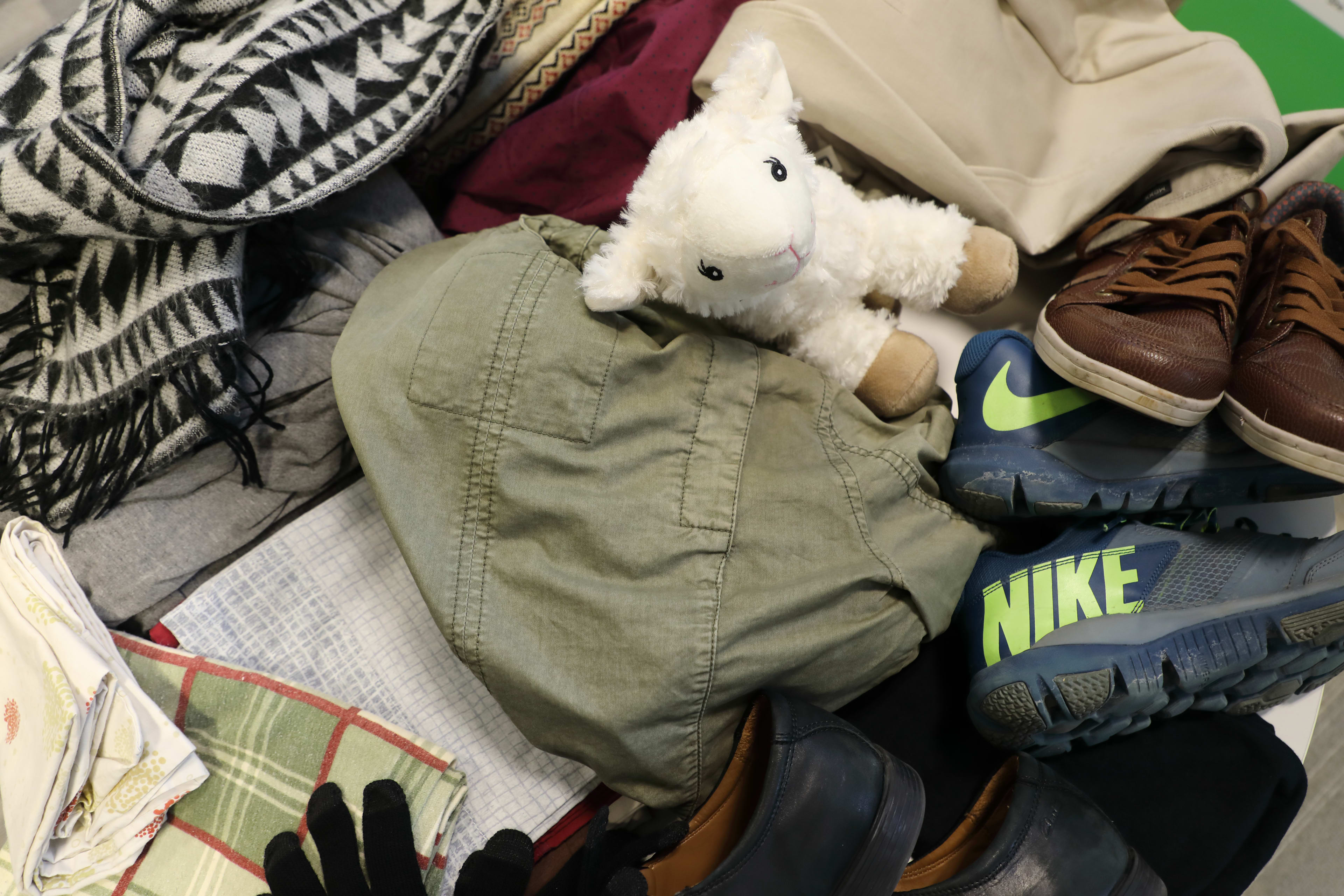Bring your old sheets & pillowcases on your next Markham GO trip
New textile recycling bins at GO Stations support people with diabetes and help the environment.
Aug 30, 2019
Those single socks in your drawer mock you.
And you know the stained towels you set aside to wash the car with are just reminders that, well, you never wash your car.
Around your home right now, there’s likely a tsunami of scrap textiles. A tempest of textiles and cyclone of unused cotton. You get the embroidered picture.
One the largest obstacles for municipalities dealing with waste is what to do with unwanted or scrap residential material. Like a double-cheese burger with bacon, it clogs the system.
But a unique new pilot program underway at four Markham GO stations is giving new life to those cotton castaways in more ways than one.
The average Canadian tosses away about 37 kg of used clothing, per person, every year (photo by Sara Wilbur).
Metrolinx has partnered with Diabetes Canada and the City of Markham to install textile recycling bins at the four GO Stations in Markham (Mount Joy, Unionville, Centennial, and Markham) to help give back and reduce our environmental footprint.
Emily Cosburn, Metrolinx’s manager of environmental management, says the transit agency was introduced to the initiative by the Toronto Region Conservation Authority’s Partners in Project Green. Partnering with Diabetes Canada and the City of Markham is a great opportunity for Metrolinx to engage with the community, support an important charitable initiative, and drive environment improvements, she adds.
“We are rethinking our waste management strategies at Metrolinx, and are thrilled do our small part in keeping more than one-billion tons of textiles out of the garbage each year,” Cosburn says.
Channeling your inner Marie Kondo – the popular decluttering expert – and clearing out your closet certainly feels good, but it’s even better when it goes to a good cause. All of the items collected go towards important life-changing initiatives led by Diabetes Canada.
Simon Langer, national manager, Government and Strategic Partnerships for Diabetes Canada, says more than $5-million is invested annually in diabetes research in part because of clothing donations.
“Revenue generated from used clothing and textiles also goes towards sending more than 2,000 kids with type 1 diabetes to diabetes camps across Canada,” Langer adds.
Net proceeds from the diverted clothing donations will support Diabetes Canada’s work. (Courtesy: Diabetes Canada).
More than half of the donated items are sold through retail partners like Value Village, and the rest of the items that can’t be resold are turned into other products like bags and insulation, rather than being thrown in the landfill. Ultimately, 95 per cent of all textiles placed in the bins are diverted from landfill.
And to make the deal even sweeter, the Metrolinx-supported textile collection program is also tied into the first national study on textile waste and diversion, being led by York University. Markham was the first municipality to enter into a formal textile waste diversion program with charitable and academic partners, but now Peel, Durham, and York Regions are on board too.
You can drop off your donations at Mount Joy, Unionville, Centennial, and Markham GO Stations. (photo by Sara Wilbur).
Wondering when this program is coming to your local GO Station? Metrolinx’s Cosburn says the initiative may be expanded to GO’s entire network of 68 train and bus stations if this pilot program yields positive results, and if other municipal partners are interested.
“The great thing about these bins is that unlike other collection drives, you can drop off nearly any kind of fabric or material,” says Cosburn. “All grades of textiles are accepted just as long as they are clean, dry and odorless.”
For the full list of accepted items, click here.
Diabetes Canada says the bins are emptied very regularly, sometimes more than once a day, to make sure they aren’t overflowing or becoming an eyesore. And the bins are all very safe. They have been reviewed by a third party engineering company to make sure they are not a risk to the public.
So, think twice before you toss out those old tighty-whities, as they could still have enough strength to support a good cause.
For more information on Diabetes Canada’s declutter program, click here.
Quick stitch fabric facts:
- The amount of textile waste has doubled over the last two decades.
- The average Canadian – tosses away about 37 kg of used clothing, per person, every year.
- Trends show people are buying more clothing but keeping it half as long as in years past.
- The average lifespan of a piece of clothing is just three years.
- An estimated 70 per cent of the world’s population uses second-hand clothing.
by Scott Money Metrolinx editorial content manager
